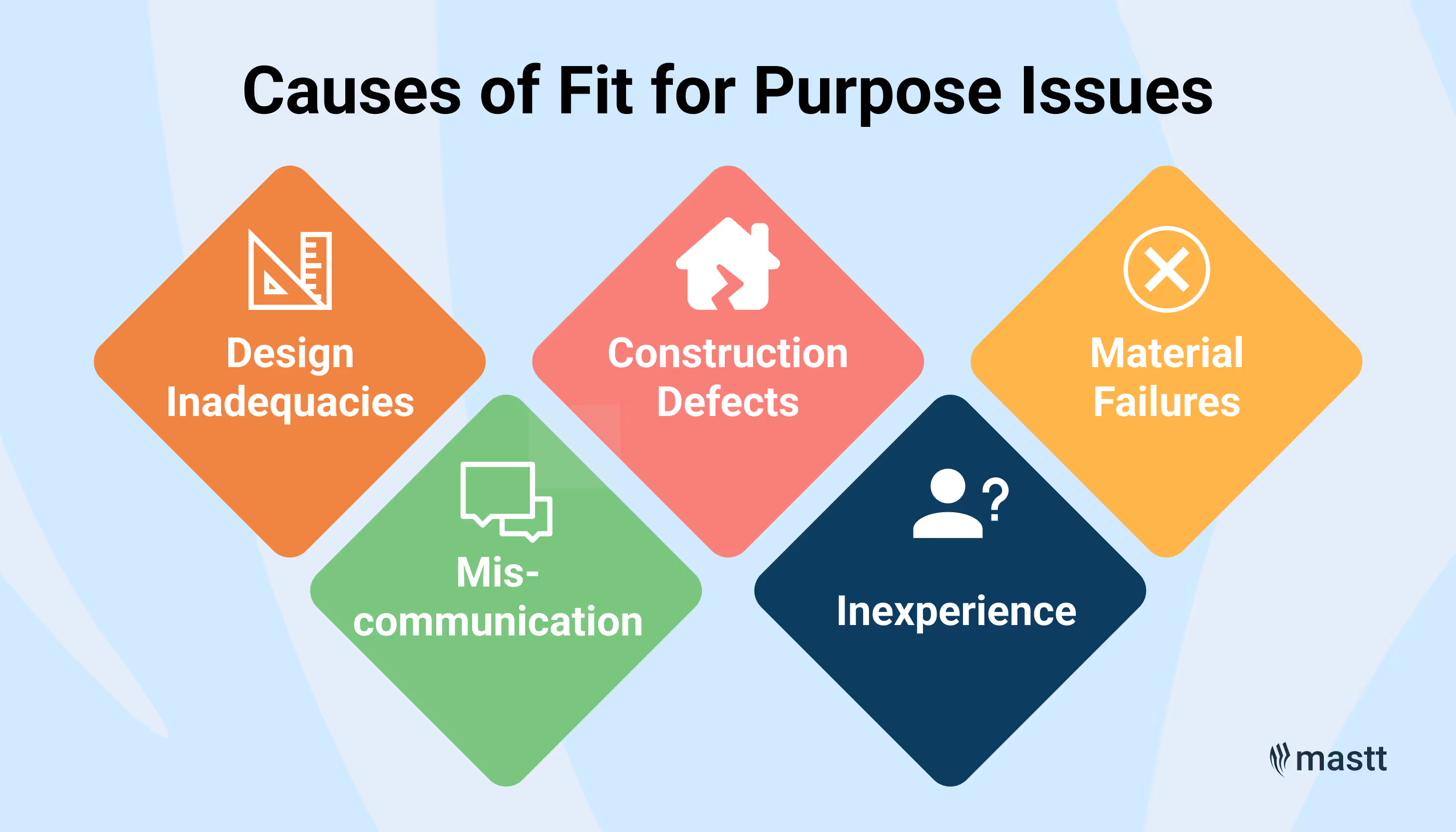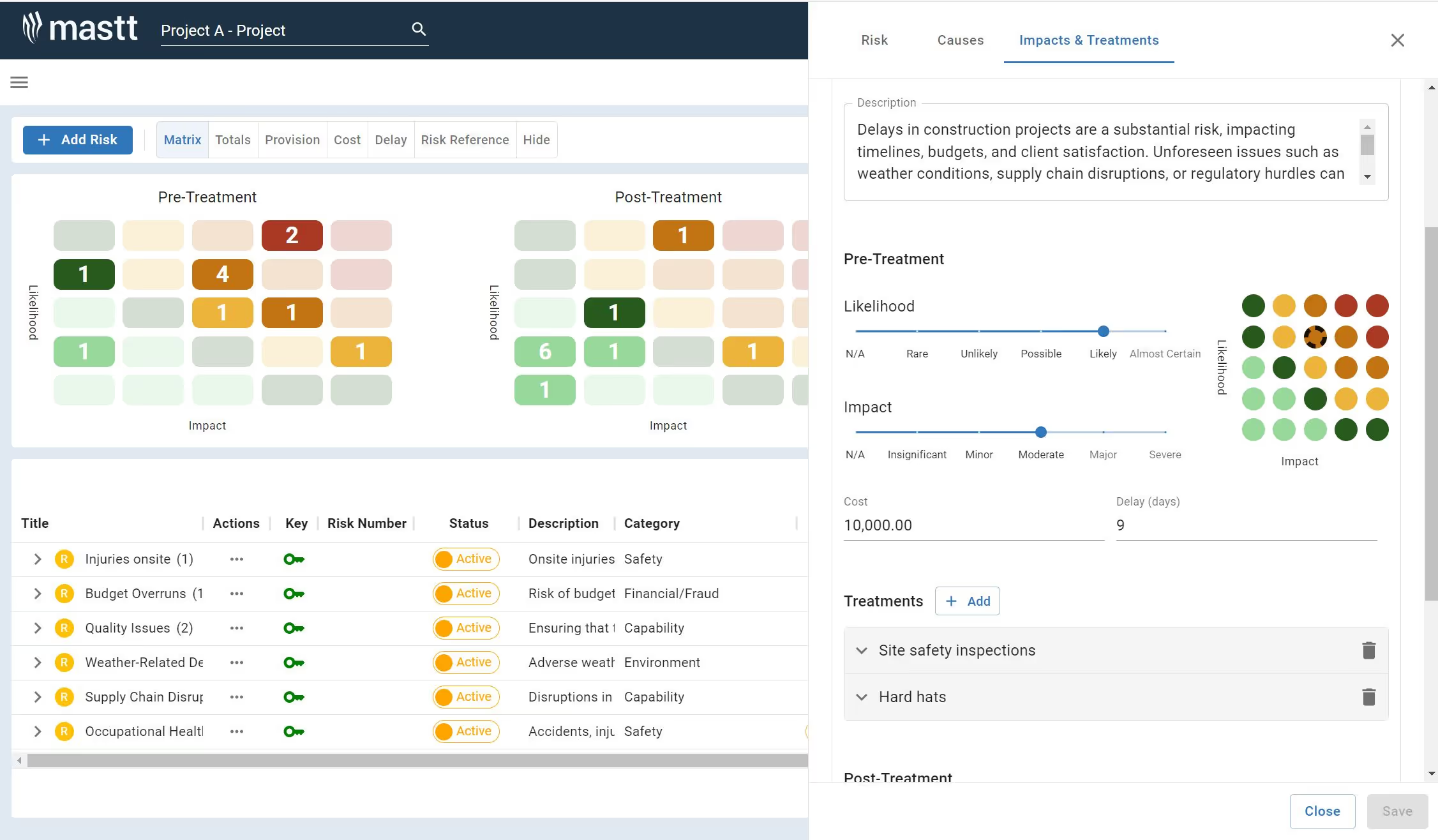What is Fit for Purpose?
'Fit for Purpose' in construction refers to the requirement that a completed project or delivered aspect of construction meets the intended use and specifications. This concept is essential to ensure that the constructed facility performs functionally to the user's requirements and the Project Owner's expectations, as well as being compliant with all relevant standards and regulations. Fit for purpose is everyone's responsibility, from the General Contractor to the Project Owner.
What does Fit for Purpose mean?
The meaning of Fit for Purpose is when the structure, systems, and components of a building or infrastructure project are all suitable for the intended purpose and meet the performance criteria set out in the project documents. If you are building a swimming pool, you should be able to swim in it safely. Failure to meet these criteria can result in other risks being realised, such as contractual disputes, remedial work, and financial losses.
Fit for Purpose Example
An example of 'Fit for Purpose' risk is a scenario where a newly constructed building intended to serve as a laboratory does not meet specific environmental control standards required for scientific research, affecting its usability for the intended purpose.
Or, a Project Owner asks a General Contractor to build a carport to cover his vehicle (which is two metres wide) and instead builds a 1.8m-wide carport that does not cover the car. The General Contractor will not have passed the 'fit for purpose' test.
The History of Fit for Purpose
The concept of 'Fit for Purpose' has long been a cornerstone in construction and engineering contracts to ensure that delivered Capital Projects adequately meet the defined requirements and functions. Historically, its origins are tied to ensuring that constructed assets meet both the operational needs of Project Owner and comply with safety and regulatory standards.
Causes of Fit for Purpose Issues
Fit for Purpose issues can arise from several sources:
- Design Inadequacies: Incomplete or incorrect design specifications that fail to meet required standards.
- Construction Defects: Poor quality construction that does not comply with the design or industry standards.
- Material Failures: Use of materials that do not perform as expected under operational conditions.
- Miscommunication: Lack of clear communication regarding the performance requirements between stakeholders.
- Inexperience: General Contractor may not have experience constructing the asset leading to construction defects.

Likelihood of Fit for Purpose Issues
The likelihood of Fit for Purpose issues really depends on the project's complexity, specifications and compliance with industry standards. These things should be resolved throughout the planning, design and initial construction phases. After all, that is why we have planning and design stages of a project, to ensure the design meet's the intent.
Consequence / Impact of Fit for Purpose Issues
The impact of failing to meet Fit for Purpose standards can be severe, including the need for costly rectification works, legal disputes over contract compliance, damage to professional reputations, and in severe cases, safety issues for end-users.
Fit for Purpose Clauses in Construction Contracts
A Fit for Purpose Clause may be enforced under contracts by specifying the standards and functional requirements of asset being constructed.
- Performance Specifications: Detailed descriptions of the performance criteria the project must meet.
- Compliance Obligations: Obligations to comply with all relevant industry standards and regulations.
- Law: Design and operation of the asset must meet legal and regulatory requirements
- Testing and Validation: Requirements for testing and validation processes to verify that the construction meets the specified criteria.
- Remedial Actions: Provisions for corrective measures if the project does not meet the Fit for Purpose criteria.
Mitigations and Treatments for Fit for Purpose Risk
Effective mitigation and treatment strategies for Fit for Purpose risk include:
- Detailed Design and Specification Reviews: Ensure that all project specifications are clear, comprehensive, and aligned with the client’s requirements.
- Quality Assurance Programs: Implement robust quality assurance processes throughout the project to monitor compliance with the Fit for Purpose criteria.
- Stakeholder Engagement: Regular engagement with all stakeholders, including clients, designers, and contractors, to ensure alignment on the project’s requirements.
- Performance Testing: Conduct extensive testing and commissioning processes to verify that all aspects of the project meet the required functional and performance standard
- Peer Review: If in doubt, seek expert review from an industry peer.
Risk Management and Reporting of Fit for Purpose Risk
As we've seen above, there are lots of considerations when it comes to Risk Management of Fit For Purpose issues. Implementing Risk Management and Reporting controls will make managing this risk easy, and ensure success of your Capital Projects.
- Risk Management Plan: Download a free Risk Management Plan Template and put a Risk Management process in place.
- Risk Register: Download a manual Risk Register Template or use an automated Risk Register solution to track all risks, causes, consequences and mitigations.
- Reporting: Create automated Risk Reports, Project Status Reports or Dashboards for communicating with stakeholders. If you need a free Report Template, you can find some examples in our templates library.

Why take the 'Risk'? 😂Start today with Mastt's fast, easy Risk Management solution
Replace spreadsheet risk registers instantly and unlock opportunities to complete Capital Projects earlier with reduced costs using Mastt.























